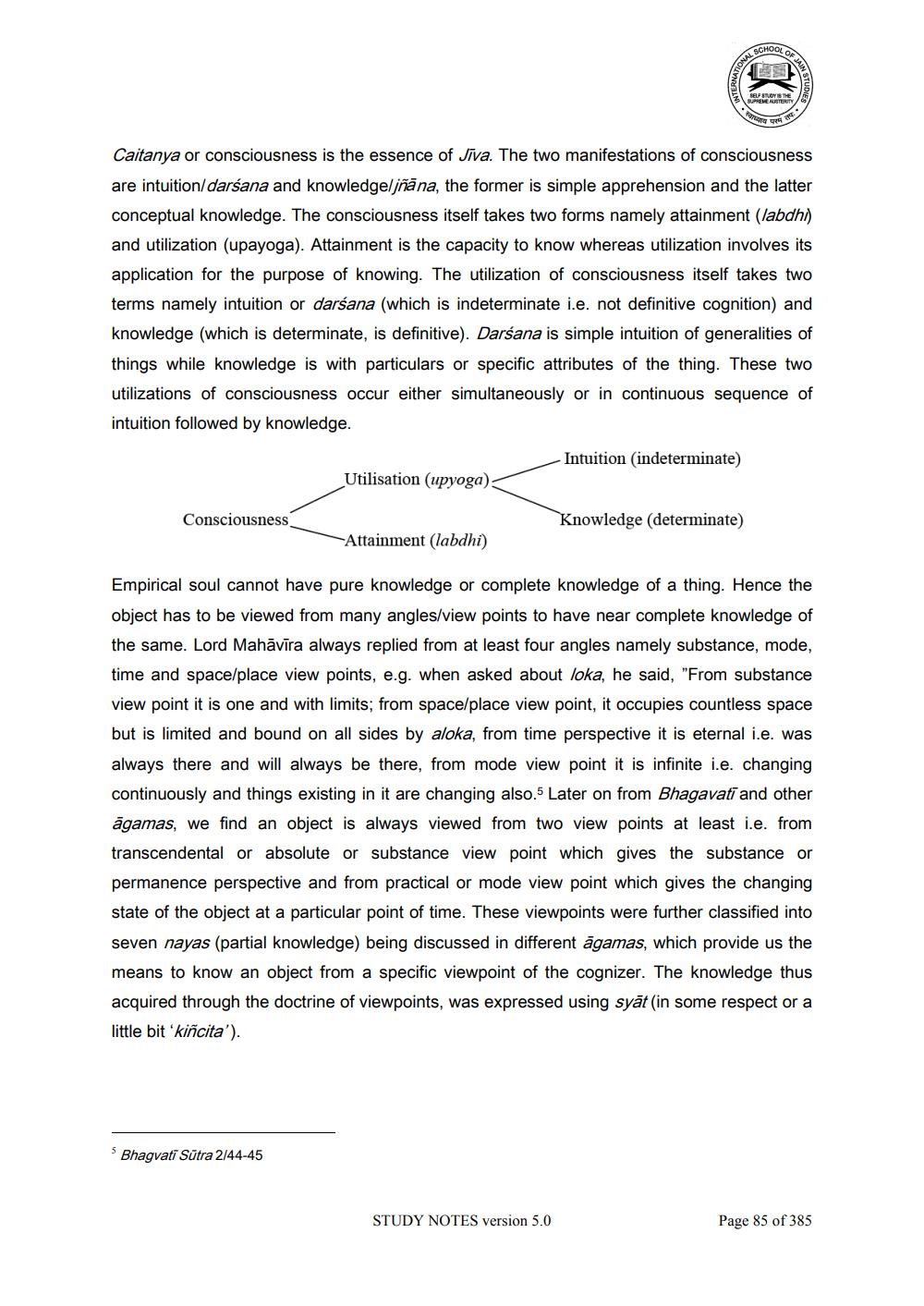________________
Consciousness
Utilisation (upyoga):
5 Bhagvati Sūtra 2/44-45
Caitanya or consciousness is the essence of Jīva. The two manifestations of consciousness are intuition/darśana and knowledge/jñāna, the former is simple apprehension and the latter conceptual knowledge. The consciousness itself takes two forms namely attainment (labdhi) and utilization (upayoga). Attainment is the capacity to know whereas utilization involves its application for the purpose of knowing. The utilization of consciousness itself takes two terms namely intuition or darśana (which is indeterminate i.e. not definitive cognition) and knowledge (which is determinate, is definitive). Darsana is simple intuition of generalities of things while knowledge is with particulars or specific attributes of the thing. These two utilizations of consciousness occur either simultaneously or in continuous sequence of intuition followed by knowledge.
STUDY NOTES version 5.0
SCHOOL
SELF STUDY IS THE SUPREME AUSTERITY
स्वाध्याय परमं तपः •
Intuition (indeterminate)
OF
Knowledge (determinate)
STUDIES
Attainment (labdhi)
Empirical soul cannot have pure knowledge or complete knowledge of a thing. Hence the object has to be viewed from many angles/view points to have near complete knowledge of the same. Lord Mahāvīra always replied from at least four angles namely substance, mode, time and space/place view points, e.g. when asked about loka, he said, "From substance view point it is one and with limits; from space/place view point, it occupies countless space but is limited and bound on all sides by aloka, from time perspective it is eternal i.e. was always there and will always be there, from mode view point it is infinite i.e. changing continuously and things existing in it are changing also. Later on from Bhagavati and other agamas, we find an object is always viewed from two view points at least i.e. from transcendental or absolute or substance view point which gives the substance or permanence perspective and from practical or mode view point which gives the changing state of the object at a particular point of time. These viewpoints were further classified into seven nayas (partial knowledge) being discussed in different agamas, which provide us the means to know an object from a specific viewpoint of the cognizer. The knowledge thus acquired through the doctrine of viewpoints, was expressed using syat (in some respect or a little bit 'kiñcita').
Page 85 of 385




